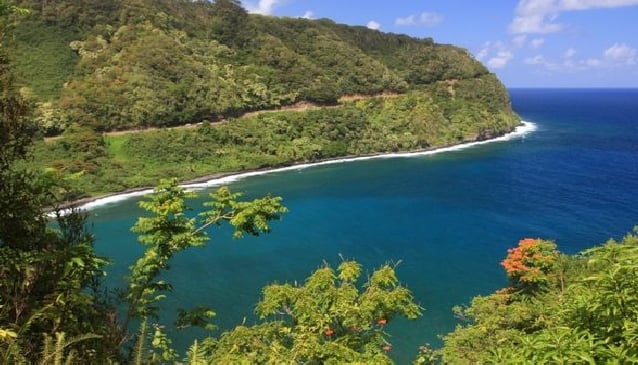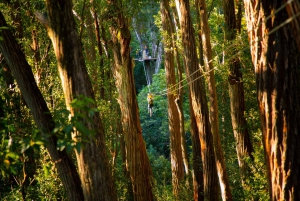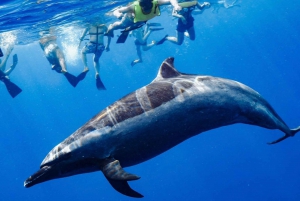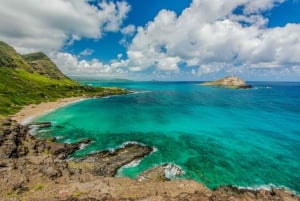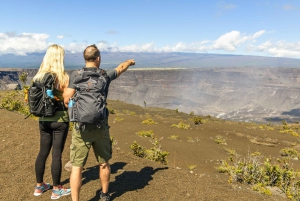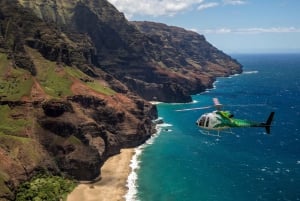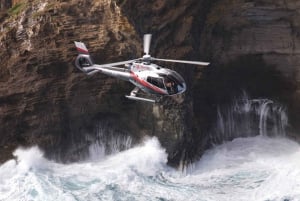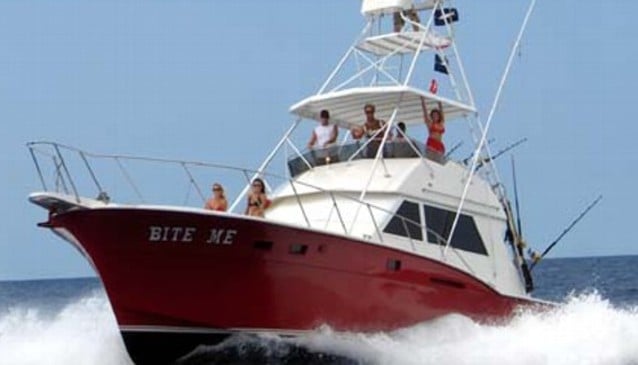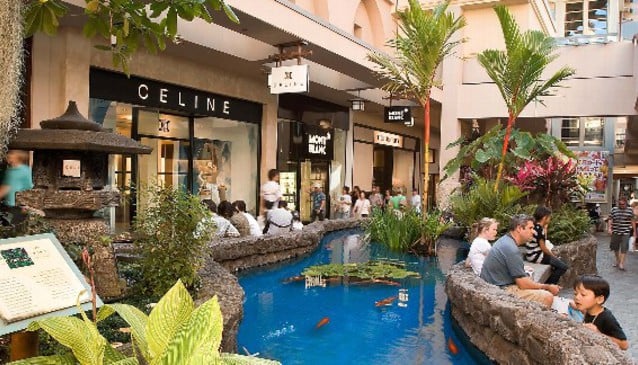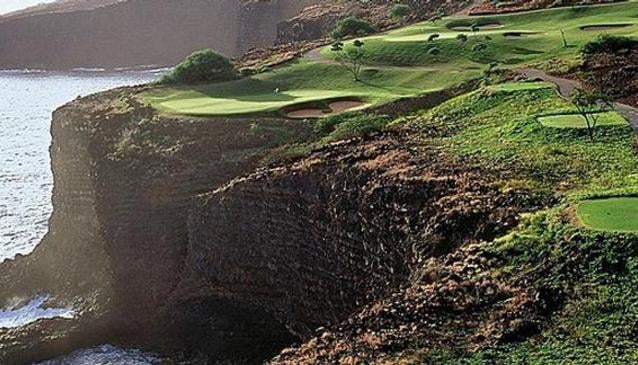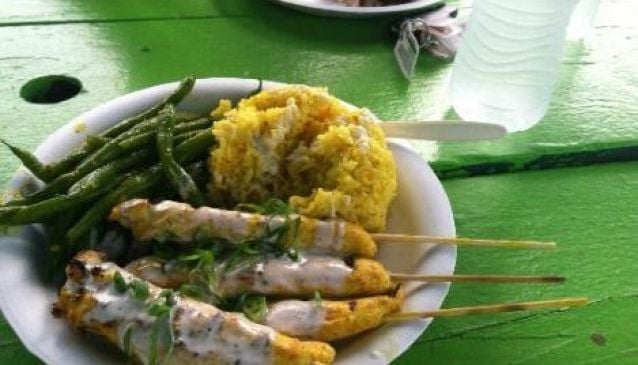A Meandering Drive in Maui
Another name for the road is the ‘Divorce Highway’
Book Top Experiences and Tours in Hawaii:
If youʻre booking your trip to Hawaii last minute, we have you covered. Below are some of the top tours and experiences!- Big Island: 3-Hour Kohala Canopy Zipline Adventure
- Oahu: Swim with Dolphins, Turtle Snorkel Tour and Waterslide
- From Waikiki: Best of Oahu Photo Tour with Pickup
- Big Island: Coffee, Black Sand, Volcano and Waterfall Tour
- Oahu: Helicopter Tour with Doors On or Off
In case you didn’t know, Hana is a settlement on the east coast of Maui, which, in case you didn’t know, is one of the , which, in case you didn’t know, are some of the most beautiful things this planet has ever produced.
However, to say Hana itself is one of the most beautiful things this planet has ever produced would be an ambitious statement – if not recklessly erroneous. It’s not full of gangsters or in the midst of some terrible epidemic or anything like that; it’s just, from a tourist’s perspective at least, it doesn't represent the trademark Hawaii things to do. Once you’ve topped up the car at the one gas station, had a bite to eat in the one restaurant and had a nap in the one hotel, you might find yourself killing time with such activities as counting to infinity and seeing how many times it takes to bang your head on a palm tree before it or you falls over.
Yet almost every visitor to Maui makes time to go there – or at least strongly considers it. The reason behind this apparent discrepancy is easily explained: to visit Hana requires you to drive the Hana Highway – or as it’s also known, one of the world’s greatest roads. It begins in Kahului, which is located on the north shore of central Maui and home to the island’s main airport, and ribbons through 68 exhilarating miles of jungle-clad, mountainous terrain scored with waterfalls and stippled with idyllic swimming holes. Contained in those 68 miles are 617 bends, 59 bridges and almost constant views of the Pacific Ocean, which pounds the rugged coastline and black-sand beaches at the feet of the towering cliffs that the most of the route is chiselled into.
Before we continue, we should make you aware that the Hana Highway is also referred to as the ‘Road to Hana’, and while we don’t violently object to this, we should point out that it’s a slightly misleading title, as it rather gives the impression that that’s where the road ends, or if not that, then the point at which drivers should turn back. You may have deduced by now that this is not the case, and that a better description would be the ‘Road that Reaches Hana and then Passes through it’, or something equally catchy. In addition, while most drivers do indeed turn back (albeit at a point beyond Hana, which we’ll come on to in due course), this is not actually necessary, as the road continues (adopting different names along the way) round in a loop, delving inland and ending at the starting point of Kahului.
Less misleadingly, another name for the road is the ‘Divorce Highway’. As any couple in a relationship will attest, being confined together in a moving vehicle – of which one has control while the other advises on how best to wield that control – gives rise to a special kind of tension; one that is so tangible it seems almost to take on a physical presence, like a darkening thundercloud hovering silently above. With some luck, forcibly increased patience and perhaps a couple of pre-counselling sessions, on most journeys that cloud doesn’t manifest itself into a storm – but the Hana Highway is not most roads. Don’t get too caught up by the promise of those life-altering views because for each one you’ll have a tricky, cliff-top corner to negotiate. To add further pressure, most of the road is very narrow, not least at those vertiginous bridges, with 46 out of the 59 being just one lane wide. All of this may amount to that usual tension taking on a significantly more volatile nature, so you’d do well to observe the second half of this article for some ideas on how to relieve it, stage by jaw-loosening stage.


Kahului
Although most holidaymakers view Kahului, the starting point for the Hana Highway, as little more than a transport hub (the island’s only international airport is located here) and flock over to the west coast before unrolling the beach towels, Maui’s largest community has a few attractions that are worth a portion of your time. One is the Alexander and Baldwin Sugar Museum, which is situated next to the island’s largest operational sugar mill and will enlighten you on the impact the sugar industry has had on Maui over the last century. Another is Maui Arts and Cultural Center, which hosts some 1,800 performances a year, ranging from music to ballet to acrobatics.
Garden of Eden: Maui Botanical Gardens And Arboretum (Just past Mile Marker 10)
That this place was chosen as the filming location for the opening scenes of Jurassic Park should give some indication to the extent of its aesthetic qualities. The gardens and arboretum cover a whopping 25 acres which are webbed with walking trails. All the bits in between are overflowing with lushness – or, to be more specific, tropical flora – in particular Ti plants – from both Hawaii and other South Pacific regions. Combined with its commanding views out to sea, this garden is truly a photographer’s Eden (sorry, that was awful) and the roaming chickens, ducks and geese will keep the kids amused too.
Lower Puohokamoa Falls (Just before Mile Marker 11)
This thin plume of a waterfall (or surging torrent if it’s been raining) plunges 130 feet from a nook in dense vegetation atop a sheer cliff. From the road it’s hidden from sight, but a good view can be found if you follow the short trail that leads from the layby, which has space for 3 – 4 cars. At the bottom of the trail it’s possible to have a swim in the pool that’s fed by the falls.
Pua’a Ka’a State Park (Just past Mile Marker 22)
This pleasant picnic area, complete with restrooms, has a few small waterfalls and adjoining swimming holes. A larger waterfall and pool can be reached by a trail that runs upstream – it’s only a 10 minute walk, but take care as the path is muddy and slippery after rainfall. You’ll most likely see some of the mongooses that inhabit the park – they were introduced many years ago to kill the rat population. The rat genocide was a resounding success, alas, when the mongooses tired of the rodents, they gobbled down all the ground dwelling birds too. There’s probably a lesson somewhere in there.
Waianapanapa State Park (Just before Mile Marker 32)
Waianapanapa offers a great chance to explore some of the often inaccessible must-see volcanic coastline that runs parallel to the road. The park spreads over 122 acres, with some of its highlights being a small jet-black sand beach backed with emerald vegetation, a scene more memorable for its striking colour contrast more than anything else, a series of blow holes, lava tube caves that fill with seawater at high tide and a natural stone arch. Due to the treacherous currents, swimming off the beach is very dangerous. So don’t.
Hana (Mile Marker 33)
As has been made clear from the start, there isn’t much going on in Hana. What hasn’t been made clear from the start, however, is that this is precisely what makes it appealing to some. Unlike some of the sprawling tourist resorts dotted throughout the Hawaiian islands, Hana still feels like an authentic and traditional Hawaiian community.




Café Romantica (Mile Marker 35)
Although there is a handful of food and drink stands spread along the Hana Highway, by far and away the most memorable is Café Romantica. It’s run by Hans and Lori Lee – married for 18 years and both culinary trained – and features gourmet vegetarian fare. There’s no menu, but this is all part of the fun; Lori will gladly discuss the daily specials. Oh, one more thing – it’s set in a converted bus in a layby.
Palapala Ho’omau Church (Mile Marker 41)
This tranquil church, which dates back to 1857 and has been built from limestone coral, is best known for being the final resting place of Charles Lindbergh, who was the first man to fly from New York to Paris. Granted, that doesn’t seem too impressive in our day and age, where plane travel has essentially turned the world into a village, but when he completed the feat back in 1927 it was akin to a 21st Century adventurer walking to Mars and back. Originally from mainland USA, Lindbergh moved to Maui to avoid the world’s spotlight following the tragic kidnap and murder of his 18 month old son.
‘Ohe’o Gulch (Mile Marker 42)
Also known by the infinitely more endearing name of ‘Seven Sacred Pools’, this deep fissure in Maui’s south coast has provided something of a natural waterpark. Sourced by the Palikea and Pipiwai Streams, which join forces on the higher slopes, the area has a multitude of picturesque cascades and pools (much more than seven, it should be noted) which gurgle their path all the way down to the ocean. Once you’ve had a dip, you can take a walk along the four-mile Pipiwai Trail, which loops round the falls giving great views of the same. At the highest point of the trail is the Waimoku Falls, which plummet 400 feet down a sheer cliff face.
Wailua Falls (Mile Marker 45)
If you visit just one of the (many, many) waterfalls present on the Hana Highway, make sure it’s this one. Widely agreed to be the best of the lot, Wailua Falls is a two-tiered affair that tumbles 80 feet into an idyllic swimming hole. Back in the day, when men were judged by their ballsiness rather than their braininess, Hawaiian boys would be required to jump from the top of the falls to show they were made of the right stuff. Not recommended, chaps, unless you’re particularly insecure, in which case you should invest in some arm bands.




* * *
This is the point where most turn back, following the route in the opposite direction to end up back at Kahului. This, as we noted earlier, is not actually necessary. If you keep on the road it becomes the Piilani Highway, then the Kula Highway and lastly the Haleakala Highway before it re-joins the Hana Highway just outside Kahului. The landscape changes dramatically as you skirt the western fringes of Haleakala National Park (a vast volcanic wilderness that hasn’t seen an eruption for over 500 years) and you’ll be rewarded with sweeping views of Kihei, which lies far below on Maui’s west coast. If you have time, Tedeschi Winery (#Mile Marker 15, Kula Highway) is worth a visit.
* * *
In summary, the Hana Highway and beyond, like any road trip worth its salt, confirms the famous quote by T.S. Eliot.
“The journey not the arrival matters.”
ESSENTIAL advice from Kari, our local expert in
· Start the trip with a full tank of gas – there are no stations until Hana
· Start early – the trip will take longer than you might expect
· Drive clockwise (which is the order this guide has been written in) as the Hana Highway is sunny in the morning, shady in the afternoon. Also, the waterfalls are best viewed in the morning as they’ll be full from the last night’s rain
· Pull over to let other cars pass – especially if the car is tailing closely as it is likely to be a local making a long commute. Also, be cautious at one way bridges – if there are oncoming cars, wait your turn. Cars will travel in groups to make crossings safer.
· Rent a convertible if possible and drive with the top down to see striking scenery that might otherwise be missed
· Have fun.
View The Hana Highway, Maui, Hawaii in a larger map


